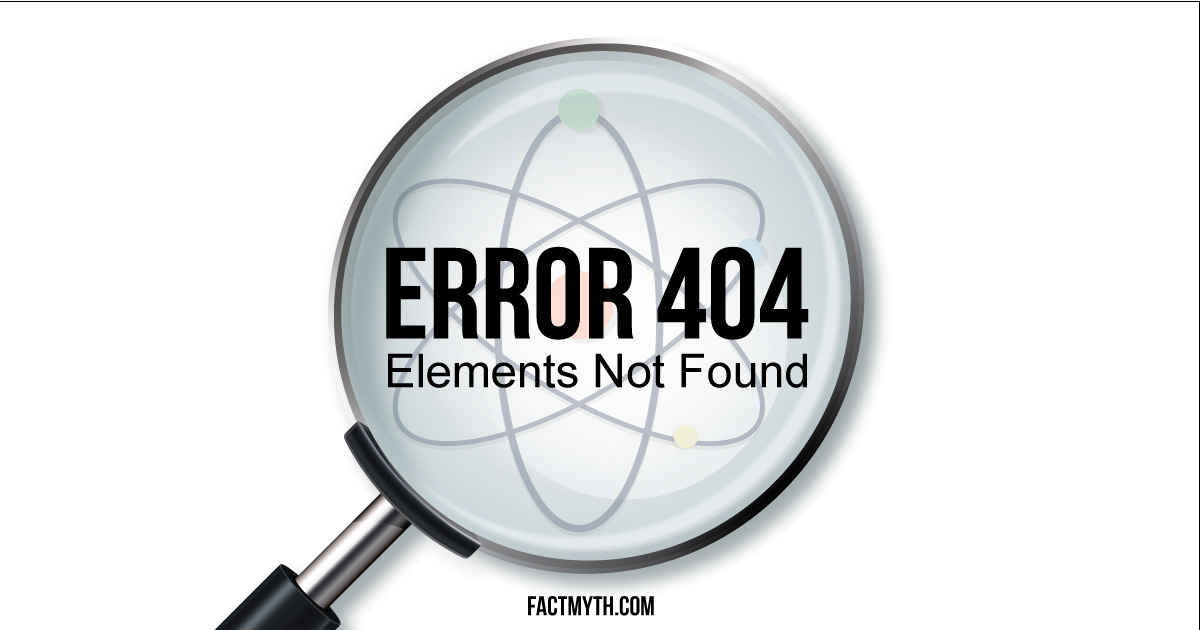There are no elements that we don’t know about, but there are atoms that we have yet to prove the existence of.
There are Elements We Don’t Know About myth

Are There Elements We Don’t Know About?
There are elements we haven’t observed occurring (naturally or in a lab), but we can predict the location and properties of “undiscovered” elements.
The reason elements are easy to predict is that they are all arranged by atomic number (number of protons in the nucleus) on the periodic table. Each new element simply has 1 more proton than the last and each added proton makes the element increasingly unstable. It is very unlikely that we will find “new elements” that we haven’t theoretically predicted.[1][2]
All observed elements up to this point have fit this pattern, so there is no reason to suspect that when we do finally observe something like “element 119” it won’t fall in neatly right where we expect to on the periodic table.
Hank Green discusses the periodic table, quality work as always.Are there undiscovered elements? Discover isn’t the right word to use when talking about “finding new elements”, “observe evidence of” is probably the best way to say it. When we “observe” unstable elements we aren’t viewing them directly, we are seeing evidence of them by measuring decay. Unstable elements lose protons and decay into stable elements very quickly (in a fraction of a millisecond).

The periodic table is built on the math of chemistry.
How Can We Predict the Existence of Elements?
The periodic table organizes elements by increasing atomic number. The math based approach to organizing elements by atomic number corresponds directly with the way the physical universe works. Hydrogen has 1 proton in its nucleus and has an atomic number of 1, we add one proton and we get Helium with an atomic number of 2, add one more proton to that and we get Lithium with an atomic number of 3, etc. In other words, the atomic number is the “proton number”, the number of protons found in the nucleus of an atom.[5]
This video helps explain the difference between atomic number and atomic mass.FACT: As of December 31st, 2015 researchers confirmed the existence of 113, 115, 117, and 118. All of these had been predicted by atomic number, given this clue and the periodic table we were able to figure out everything about them before scientists confirmed observing evidence of their existence.[3][6]
FACT: 118 is the highest atomic number we have observed, beyond this is the “extended periodic table” which sort of keeps going although some calculations put the limit at 173 – 184.[4]
This video shows us “the extended periodic table” and explains how it goes beyond Z=118.Mendeleev’s Periodic Table Versus the Periodic Table
Mendeleev’s periodic table had holes in it because he was trying to organize the periodic table by atomic weight (measuring atomic mass rather than the number of protons, due to the lack of technology at the time).
FACT: There are no “holes” in the periodic table, just placeholders for elements we haven’t confirmed yet.
- “Are There Any Undiscovered Elements?“. Chemistry.about.com. Retrieved Feb 8, 2016.
- “Is it possiable that there are elements we haven’t discovered here on earth?“. Answers.yahoo.com. Retrieved Feb 8, 2016.
- “Four new elements to be added to periodic table“. Cnn.com. Retrieved Feb 8, 2016.
- “Extended periodic table“. Wikipedia.org. Retrieved Feb 8, 2016.
- “Atomic number“. Wikipedia.org. Retrieved Feb 8, 2016.
- “Discovery and Assignment of Elements with Atomic Numbers 113, 115, 117 and 118“. Iupac.org. Retrieved Feb 8, 2016.
